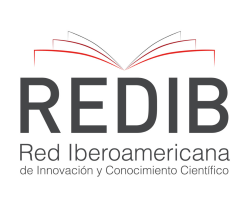Cómo Evitar que el Móvil sea una Distracción en la Educación
Resumen
El uso de teléfonos móviles en las escuelas es un tema de debate entre educadores, padres y legisladores. El objetivo de este artículo es relacionar el uso del teléfono celular con el rendimiento académico de los estudiantes de las Unidades Educativas “Juan Montalvo” y “23 de junio” del cantón Babahoyo en Ecuador; además de brindar algunas estrategias para evitar que este dispositivo sea una distracción. Se realizó una investigación explicativa, con una muestra de 611 adolescentes y jóvenes con similares particularidades de edad, grado académico y número de horas de escolarización. Primero se realizó un análisis documental y luego se aplicaron 4 encuestas durante el periodo académico 2023; los datos fueron analizados mediante el programa estadístico SPSS (versión 14.0), estadística descriptiva y análisis de varianza para un factor (ANOVA). Los resultados muestran que el 95,0% de los estudiantes utiliza el teléfono móvil desde hace más de 3 años y que el 25,0% admite que este dispositivo los aleja de su importancia en el proceso educativo. Por otro lado, los estudiantes que más utilizan el celular durante las clases tienen el promedio más bajo; Además, el 100% de los padres coincide en que se deben aplicar estrategias dentro del colegio para que el rendimiento académico no se vea afectado por el uso excesivo de este dispositivo. Con esto se concluye que las familias de las dos instituciones educativas asumen las responsabilidades y se confieren los siguientes mecanismos para que los adolescentes hagan un uso adecuado del celular en el proceso educativo: Normatividad clara, zonas libres de celular, horarios libres de tecnología, recompensas por el cumplimiento de la normativa, seguimiento puntual de incidencias.
Descargas
Citas
BARRY, M. & YU, L. (2002). The uses and meaning of "I-mode" in Japan. Estudios de Juventud, 57, 151-172.
BONONATO, L. B. (2005) Addictions and new technologies. Proyecto Hombre, 55, 17-21. Available at: http://www.proyectohombre.es/psimgdb/archivo_doc7011.pdf [Accessed 26/10/06]
BIANCHI, A. & PHILLIPS, J. G. (2005). Psychological predictors of problematic mobile phone use. Cyberpsychology and Behavior, 8, 39-51.
CASTELLANA, M., SÁNCHEZ-CARBONELL, X., BERANUY, M. and GRANER, C. (2006). The relationship of adolescents with ICTs: A topic of social relevance. COPC Fact Sheet, 192, 22-23
DIMMICK, J. W., KLINE, S., and STAFFORD, L. (1994). The gratification niches of personal email and phone. Competition, displacement and complementarity. Research in Communication, 27, 227-248.
GUARDIOLA, E., SÁNCHEZ-CARBONELL, X., BERANUY, M, & BELLES, A. (2006). What is known about ICT addiction? An analysis through scientific bibliography databases. 10enes Jornades catalanes d'Informació i Documentació. Barcelona, May 25-26, 2006.
HADDON, L. G. (2002). Youth and mobiles: the British case and other issues. Estudios de Juventud, 57, 115-125.
HÖFLICH, J. & RÖSSLER, P. (2002). More than a phone: The mobile phone and the use of SMS by German teenagers. Results of a pilot study. Estudios de Juventud, 57, 79-99.
LEUNG, L. & WEI, R. (2000). More than talking on the move: Uses and gratifications of the cell phone. Quarterly Journal of Journalism and Mass Communication, 77, 308-320.
LEPP, A., BARKLEY, J. E., & KARPINSKI, A. C. (2015). The relationship between cell phone use, academic performance, anxiety, and life satisfaction in college students. Computers in Human Behavior, 31, 343–350.
LING, R. (2002). Teen girls and young adult males: two subcultures of the mobile phone. Estudios de Juventud, 57, 33-46.
LORENTE, S. (2002). Youth and mobile phones: more than just a fad. Estudios de Juventud, 57, 9-24.
MANTE, E. & PIRIS, D. (2002). The use of mobile messaging by young people in the Netherlands. Estudios de Juventud, 57, 47-58.
MCILWRAIGTH, R., JACOBVITZ, R. S., KUBEY, R., y ALFAGENE, A. (1991). Television addiction: theories and data behind the omnipresent metaphor. American Behavioral Scientist, 35, 104-121.
MORENO, M. A., BRINER, L. R., & Williams, A. (2009). A content analysis of alcohol references displayed on a social media website. Journal of Adolescent Health, 45(4), 421–423.
MUÑOZ-RIVAS, M. J. and AGUSTÍN, S. (2005). Mobile phone addiction. Behavioral Psychology, 13, 481-493.
O'KEEFE, G. J. and SULANOWSKI, B. K. (1995). More than just talking: uses, gratifications and the phone. Quarterly Journal of Journalism and Mass Communication, 72, 922-933.
OKSMAN, V. & RAUTIAINEN, P. (2002). My whole life in the palm of my hand: Mobile communication in the daily life of children and teenagers in Finland. Estudios de Juventud, 57, 25-32.
PROTECT THEM. Child safety and habits of minors in the use of mobile telephony. Protegeles y Defensor del Menor, Madrid, 2005. Available at: http://www.dmenor-mad.es/pdf/estudiotelefonosmoviles.doc [Accessed 26/10/06]
RIDEOUT, V., & ROBB, M. B. (2018). Social networks, social life: Adolescents reveal their experiences. Common sense means.
SÁNCHEZ-CARBONELL, X and BERANUY M. "Technological Addictions". In T. TALARN (ed.) Manual of modern psychopathology. (submitted for publication in Herder).
SÁNCHEZ-CARBONELL, X; BERANUY, M; CASTELLANA, M; CHAMARRO, A and OBERST, U. Internet and mobile phone addiction: disorder, fashion or social overadaptation? Submitted for publication in Addictions.
SRIVASTAVA, L. (2005). Mobile phones and the evolution of social behavior. Behavior and Information Technology, 24, 111-129.
SURRAT, C. G. (1999). Netaholics?: The creation of a pathology. New York: Nova Science. Tgenge, J. M., Martin, G. N., & Campbell, W. K. (2018). Psychological well-being among U.S. teens declines after 2012 and is related to screen time during the rise of smartphone technology. Emotion, 18(6), 765-780.
THOMÉE, S., HÄRENSTAM, A., & HAGBERG, m. (2011). Mobile Phone Use and Stress, Sleep Disorders, and Symptoms of Depression Among Young Adults: A Perspective
VERDÚ, V. (2005). Me and you, luxury objects. Barcelona: Debate.
WARDEN, N. L., PHILLIPS, J. G., y OGLOFF, J. (2004
Unesco 2023 https://es.weforum.org/agenda/2023/08/la-unesco-pide-que-se-prohiban-los-telefonos-en-las-escuelas-por-que/
MARTÍNEZ, 2021 http://www.scielo.org.co/scielo.php?script=sci_arttext&pid=S0034-74502021000200070
(Sunday, 2021; Kuznecoff, 2015; Ames, 2020;
"The Impact of Mobile Phone Use on Student Learning Outcomes in Higher Education" This study looks at how mobile phone use affects the academic performance of college students, exploring both positive and negative effects.
"Smartphones in the Classroom: Examining the Effects of Texting, Twitter, and Message Content on Student Learning" Research how smartphone use during classes, especially for non-learning activities, affects attention and information retention.
"Mobile Phone Use and Academic Performance: A Preliminary Study on Undergraduate Students" It examines the correlation between mobile phone use and academic performance in undergraduate students, highlighting the distractions generated by these devices.
Sierra-Macías A., Reynaga-Ornelas, L., Dávalos-Pérez A., & Gonzáles-Flores A. D. (2024). Calidad de vida relacionada con la salud en adolescentes embarazadas de México y Chile. Estudios Y Perspectivas Revista Científica Y Académica , 4(1), 680–697. https://doi.org/10.61384/r.c.a.v4i1.123
Córdova Gonzales , L. A., Flores Vásquez , M. E., Becerra Flores , S. N., Ortiz Salazar , N. G., Franco Mendoza , J. M., & García Vattam , R. E. (2024). Compromiso y Procrastinación Académica en Estudiantes de una Universidad Pública de Lima. Revista Científica De Salud Y Desarrollo Humano, 5(1), 208–233. https://doi.org/10.61368/r.s.d.h.v5i1.86
Sierra-Macías A., Reynaga-Ornelas, L., Dávalos-Pérez A., & Gonzáles-Flores A. D. (2024). Calidad de vida relacionada con la salud en adolescentes embarazadas de México y Chile. Estudios Y Perspectivas Revista Científica Y Académica , 4(1), 680–697. https://doi.org/10.61384/r.c.a.v4i1.124
Martínez, O., Aranda , R., Barreto , E., Fanego , J., Fernández , A., López , J., Medina , J., Meza , M., Muñoz , D., & Urbieta , J. (2024). Los tipos de discriminación laboral en las ciudades de Capiatá y San Lorenzo. Arandu UTIC, 11(1), 77–95. Recuperado a partir de https://www.uticvirtual.edu.py/revista.ojs/index.php/revistas/article/view/179
v, H., & Quispe Coca, R. A. (2024). Tecno Bio Gas. Horizonte Académico, 4(4), 17–23. Recuperado a partir de https://horizonteacademico.org/index.php/horizonte/article/view/14
Da Silva Santos , F., & López Vargas , R. (2020). Efecto del Estrés en la Función Inmune en Pacientes con Enfermedades Autoinmunes: una Revisión de Estudios Latinoamericanos. Revista Científica De Salud Y Desarrollo Humano, 1(1), 46–59. https://doi.org/10.61368/r.s.d.h.v1i1.9
Derechos de autor 2025 Mora Aristega Angélica Margara

Esta obra está bajo licencia internacional Creative Commons Reconocimiento 4.0.













.png)




















.png)
1.png)


